GREAT GARDEN = HANDS ON + BOOKS
Fishing, Gardening
“Give a man a fish, and you feed him for a day. Teach a man to fish, and you feed him for a lifetime.” How true, also in gardening. Not to mention the emotional and intellectual gratification, the “companionship with gently growing things . . . [and] exercise which soothes the spirit and develops the deltoid muscles” (C. D. Warner, 1870).
Let’s take teaching the man — or woman — to fish one step further, gardenwise. Lot’s of people wow others with the expertise they have allegedly accrued as evidenced from the mere fact that they’ve spent a number of years, perhaps decades, with their hands in the dirt. I roll my eyes. Flowering plants originated at least 130 million years ago, which is plenty of time to let the trial and error of evolution teach them to grow. Tuck a seed into the ground and it will probably grow.
Better gardening comes from having some understanding of what’s going on beneath the ground and up in the plant. This comes from growing and observing a variety of plants growing in a variety of soils and climates — which is more than is possible in a lifetime.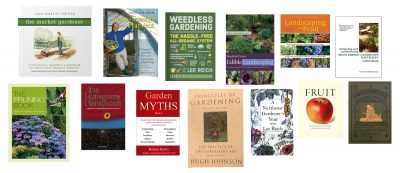
There’s a shortcut: books, a nice adjunct to getting your hands in the dirt. All of which is a roundabout way of my offering recommendations for books about gardening. The right book is also a great gift idea.
Vegetables and Fruits
Growing fruits and vegetables (and soil care) are my main interests in gardening.
For a book chock full of all sorts of information on growing vegetables, go to Catherine Osgood Foster’s The Organic Gardener. It’s an old book, published in the 1970s, back when the organic gardening movement was picking up steam. It’s packed with solid information still useful and true today.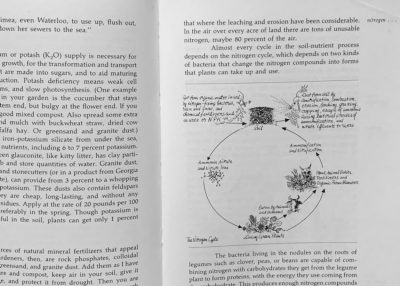
Despite it’s title, J. M. Fortier’s The Market Gardener: A Successful Grower’s Handbook for Small-Scale Organic Farming provides much that can be applied on a garden scale also. After all, J.M.’s farm is only an acre and a half. Two reasons his farm has been able to provide his family’s livelihood are his good organization skills, all clearly spelled out, and his appreciation of biological systems.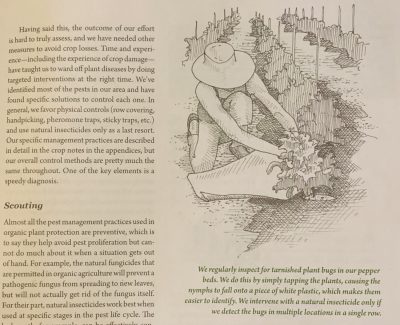
Eliot Coleman’s Four-Season Harvest is not a book on which to cut your teeth about vegetable growing. But once you have the basics down, this is a book to turn to for learning how to grow vegetables year round, even in cold climates. Eliot’s farm is in Maine!
I’ve also contributed to the lexicon of vegetable growing, with my book Weedless Gardening. Yes, it is about weed-lessness, via a four part system that emulates Mother Nature, but it’s also full of details such as specific timing for planting and cultivation of various vegetables; also lots of stuff on related topics like drip irrigation, composting, and use and selection of cover crops.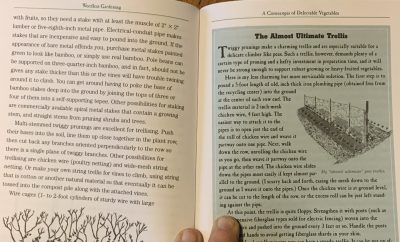
Luscious Landscaping
Man [and woman] can’t live by bread alone, but we men and women can, figuratively, have our cake and eat it too. The concept of edible landscaping was formally borne about 40 years ago, and its doyenne, Rosalind Creasy, has updated her original book Edible Landscaping. In addition to all the good information, the book is replete with photos of luscious landscapes.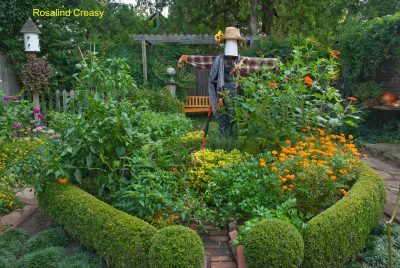
Rosalind’s book embraces growing fruits and vegetables decoratively; my contribution, here, digs more deeply into doing this with only fruits with the aptly titled book Landscaping with Fruit. (One problem with landscaping with vegetables is that eating a vegetable can mess up the design; not so with fruit trees, shrubs, and vines.) 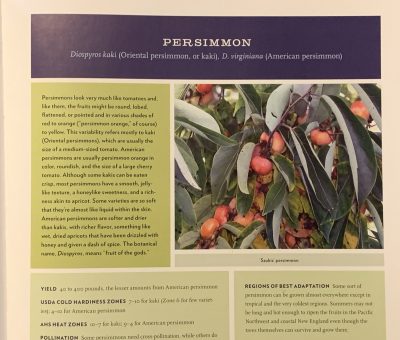
A good companion to both my and Rosalind’s book is Robert Kourik’s Designing And Maintaining Your Edible Landscape Naturally. All three books lead you along the path to an edible landscape starting with site evaluation, moving on to design basics and creating a plan. From there, the books veer away from each other, with Rosalind focusing more on the art while Robert’s focus is on soil, plant roots, and irrigation, and mine on details of feasibility and growing of the specific fruits. The books complement each other.
Armed with pruning tools, from loppers to shears to thumbnails (for pinching shoot tips), let my book, The Pruning Book, guide where to cut and pinch to keep fruit and vegetable plants trim and productive.
Speaking of soil (the word “soil” is two paragraphs up, in case you were speed reading and missed it), one of my favorite books, soil-related, is The Humanure Handbook by Joseph Jenkins. Humanure? Yes, it’s just what it sounds like. Besides providing a system for composting/recycling human waste, The Humanure Handbook also offers abundant information about pathogens and their survival, and practical information about composting. Also, lots of humor, both graphic and verbal. 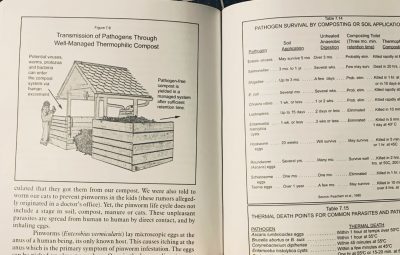
Speaking of manure, there’s a lot of bs around, even in the world of gardening. Cut through that bs (which is not the compostable kind) with Robert Pavlis’s Garden Myths. As an iconoclast, I made notes over the years with the idea of writing such a book; now I don’t have too. As a sceptic, it’s sad to say that I agree with 99 percent of Robert’s myth-busting. There’s enough gardening bs around these days to fill more than one volume. Robert has obliged us with two volumes, Garden Myths, Book 1 and Garden Myths, Book 2.
Five more books are not necessarily practical, but are well worth reading if you have any interest in gardening or agriculture. Principles of Gardening: The Practice of the Gardener’s Art by Hugh Johnson covers the science, the art, the plants, planting systems, the seasons, the history, the design — just about everything garden-related, I could think of with engaging text and oodles of illustrations and photographs. Read it piecemeal, jumping around within according to your interests of the moment.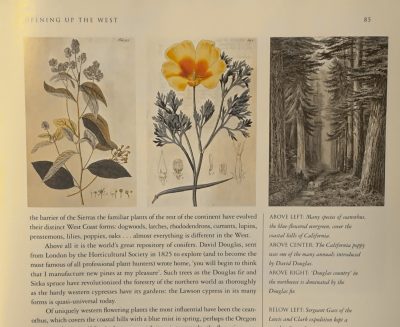
You could read individual entries in my book, A Northeast Gardener’s Year, in a similar fashion. This one covers what to do, how to do it, and when to do it. Topics range far and wide, all dictated by the progress of the seasons, which the book follows month by month. But you don’t have to.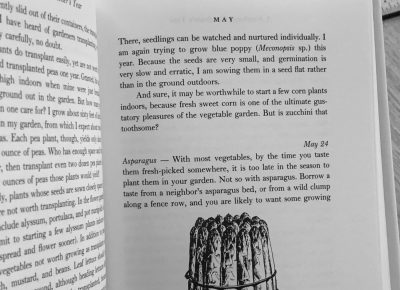
Farmers of Forty Centuries, by soil scientist F. H. King relates his travels to China a century ago. It offers food for thought about the possibility of truly sustainable agriculture (forty centuries worth) in the past and the future. The agriculture in China that King describes is far different from what’s going on in contemporary China.
And finally, two books only tangentially related to gardening.
Mostly an art book, Fruit: From the USDA Pomological Watercolor Collection, melds art, along with some history and botany, into a pocket-sized folio that’s a miniature coffee table book. My writing covers the history and botany of fruit growing. Most of the book is illustrations, 250 of the 7500 that I selected from watercolor depictions of various kinds and varieties of fruits that were commissioned by the U. S. Department of Agriculture between 1886 and 1942.
Charles Dudley Warner’s My Summer in a Garden is not really a gardening book. This is prose at its best, a humorous book that chronicles the highs and lows in the author’s garden, often — still with a smile — with philosophical, moral, or political implications. The remark “Everybody complains about the weather, but nobody does anything about it.” That was Charles, although often attributed to Mark Twain, a good friend, and a neighbor of Mark Twain, with whom he wrote The Gilded Age: A Tale of Today. Very au courant, both his books.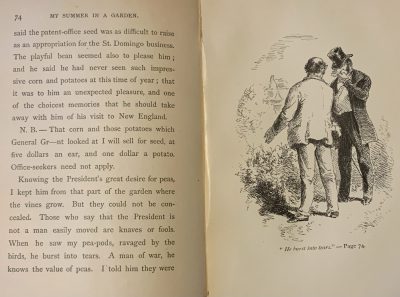


Wonderful! Thank you!